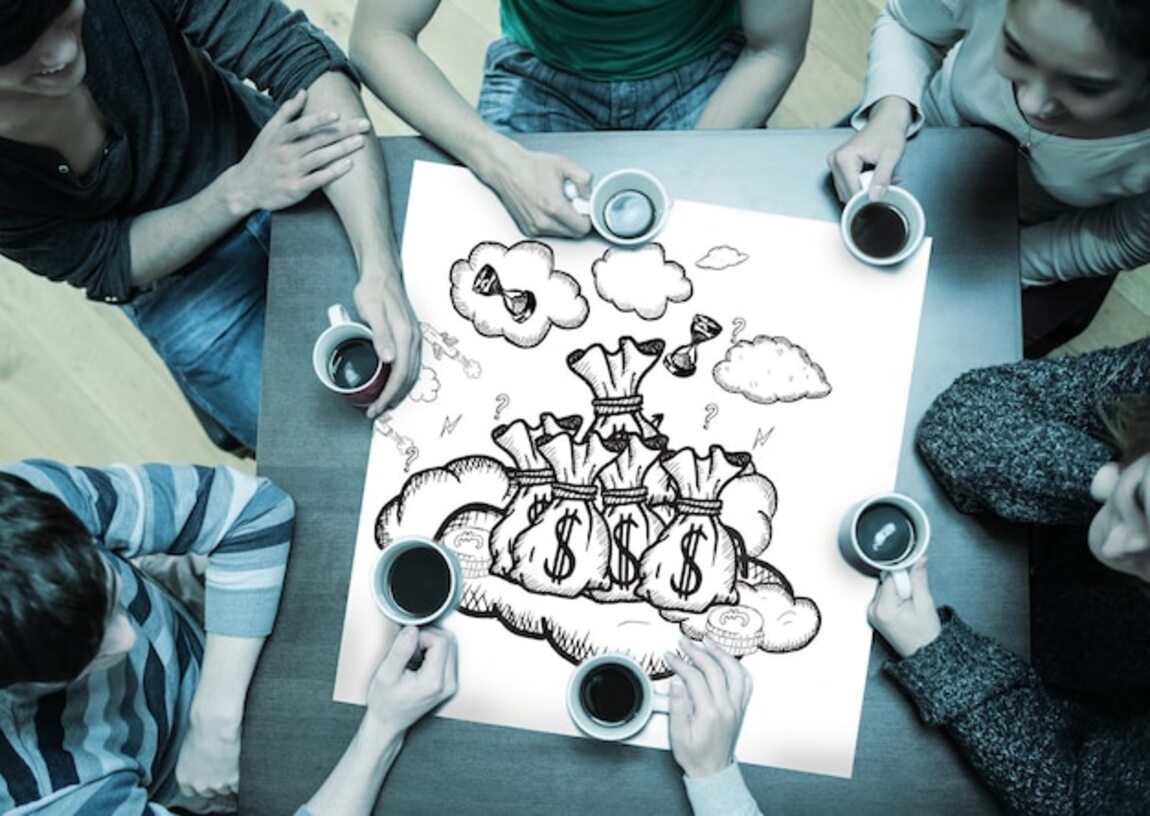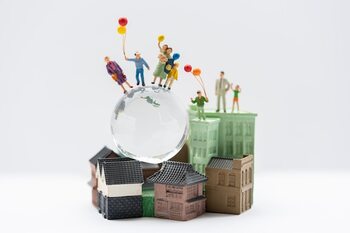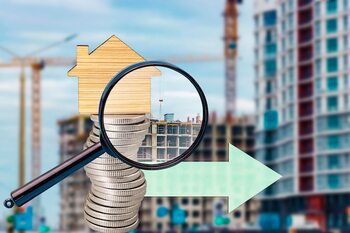The influence of participatory design on the value of your home

The influence of participatory design on your home's value is a crucial topic for those looking to maximize their real estate investment. In a world where community plays an essential role, understanding how collective decisions and collaboration in space design can elevate a property's value is fundamental. Through this article, you will discover how engaging in participatory processes not only transforms your immediate environment but also enhances the appeal and value of your home in the market.
What is participatory design and why does it matter?
Participatory design is a collaborative approach that involves various stakeholders, such as owners, neighbors, and design professionals, in the process of planning and creating spaces. This method not only focuses on the individual needs of each participant but also seeks to create a harmonious environment that reflects the identity and values of the community. By integrating different perspectives and experiences, participatory design allows for the development of more inclusive and sustainable solutions that enhance the quality of life in neighborhoods. This collaboration fosters a sense of belonging and shared responsibility among residents, which is vital for building resilient communities. The importance of participatory design lies in its ability to increase property value by making spaces more attractive to both current and future residents. When people actively participate in how their environments are designed, projects are generated that truly respond to their needs and desires. This not only creates greater satisfaction among residents but can also translate into increased interest from potential buyers. The integration of features desired by the community and the focus on sustainability can turn an ordinary home into a highly sought-after property, thereby elevating its value in the real estate market.
2. Benefits of collaborative design in residential communities.
Collaborative design in residential communities fosters a sense of belonging and cohesion among neighbors, which can in turn translate into a safer and more pleasant environment. When people actively engage in the planning and development of their shared spaces, stronger relationships are formed and satisfaction with their living place increases. These types of interactions not only enhance the quality of life but also create an appealing atmosphere for potential buyers, thereby increasing the perceived value of properties in the community.
By adopting a collaborative approach to the design of residential spaces, specific needs that reflect the preferences and lifestyles of the inhabitants can be addressed. This can include recreational areas designed for families as well as community spaces that encourage social interaction. The personalization of the environment not only enhances the aesthetics of the neighborhood but also promotes a unique sense of local identity. This uniqueness can be a deciding factor for those looking to purchase a property, further elevating its value in the real estate market.
3. How participatory design can increase the value of your property.
Participatory design fosters a sense of community and belonging, which can translate into a significant increase in the added value of a property. When owners actively engage in the design process of their environment, they help create spaces that reflect the needs and desires of the collective. This not only improves the quality of life in the area but also attracts new buyers interested in properties that offer a more cohesive and friendly atmosphere. A neighborhood where residents have collaborated to enhance parks, squares, or common areas is naturally more attractive and, therefore, tends to increase the value of their properties.
Additionally, participatory design allows for the identification and resolution of specific issues that could affect property value in the long term. By working together to address concerns such as safety, access to services, or urban environment maintenance, homeowners can enhance overall satisfaction within their community. This proactivity not only strengthens bonds among neighbors but also creates a positive image of the area to potential buyers and investors. In summary, by involving all stakeholders in the design and improvement process of the shared space, the perception of local real estate value can be elevated, thereby maximizing the appreciation of each home individually.
4. Successful examples of participatory design in Costa Rica.
In Costa Rica, participatory design has proven to be an effective approach to revitalizing communities and improving the quality of life of their inhabitants. A notable example is the urban renewal project in the La Carpio neighborhood, where residents actively engaged in the planning of public spaces and recreational areas. Through workshops and community meetings, neighbors expressed their needs and desires, resulting in the creation of parks, plazas, and cultural centers that not only beautified the area but also fostered a sense of belonging among residents. Such initiatives not only improve the physical environment but also elevate the neighborhood's perception among potential buyers and investors, thus increasing its real estate value. Another successful case is the development of the "Ciudades para la Vida" program, driven by various local organizations in conjunction with government institutions. This program promotes citizen participation in sustainable and accessible urban infrastructure projects. In several Costa Rican communities, citizens have collaborated on decisions regarding transportation, housing, and green spaces. As a result, these environments tailored to the real needs of their users have seen significant appreciation in their properties. By involving the community from the early stages of design, more functional and attractive spaces are created that truly reflect local identity, thus increasing both their emotional and financial value in the real estate market.
5. Strategies to get involved in community projects.
Getting involved in community projects is one of the most effective strategies to maximize the value of your home through participatory design. Start by identifying local initiatives aimed at improving public spaces, such as parks, squares, or recreational areas. By joining neighborhood groups or community associations, you will not only contribute your ideas and skills to the process, but also strengthen social cohesion in your neighborhood. This type of active participation not only allows you to influence the environment around you but also creates a sense of belonging and pride in your community.
Additionally, participating in community projects can provide you with the opportunity to establish relationships with other neighbors and urban design professionals. These connections are valuable, as they can facilitate future collaborations and share resources and information about home and neighborhood improvements. Staying informed about sustainable and accessible design trends is key; by engaging in these conversations, you can contribute to projects that reflect your values and needs as a homeowner. As your community improves through these collaborative initiatives, the overall perception of the area rises, which directly impacts the value of your property.
6. The impact of sustainable design on real estate value.
Sustainable design not only becomes a trend but also a decisive factor for real estate value. Properties that incorporate sustainable practices, such as the use of recycled materials, energy-efficient systems, and green spaces, increasingly attract environmentally conscious buyers. These elements not only enhance the quality of life for occupants but also reflect a commitment to sustainability that can translate into a significant increase in resale value. As the demand for eco-friendly homes continues to grow, homeowners who implement these features can expect to see an appreciation in their investment.
Additionally, sustainable design fosters a more cohesive and healthy community, which is highly valued by potential buyers. Well-designed and accessible outdoor spaces encourage social interactions and a sense of belonging among residents. This not only enhances the quality of the urban environment but also creates additional appeal for those looking to settle in areas committed to environmental and social well-being. In this context, the impact of sustainable design on real estate value becomes a key aspect to consider for both developers and owners interested in maximizing their long-term investment.
7. Future of urbanism: trends toward greater citizen participation.
The future of urbanism is shaping up as a space where citizen participation becomes a central element. Citizens, by actively engaging in the design and development of their communities, not only exercise their right to voice opinions but also contribute to creating more inclusive and functional environments. This participatory approach allows urban solutions to truly reflect the needs and desires of the community, resulting in more livable and valued spaces. Collaboration between designers, architects, and residents fosters a sense of belonging that can be decisive in enhancing real estate value.
By encouraging greater citizen participation in urban planning processes, a continuous dialogue among the different stakeholders is promoted. This interaction not only helps identify local problems and opportunities for improvement, but also facilitates access to resources and funding for community projects. As more cities adopt this collaborative model, it is likely that we will see an increase in property values in areas where residents have played an active role in their development. Thus, participatory urbanism not only transforms the urban landscape but also serves as a driver to enhance the commercial appeal of homes within these revitalized communities.



